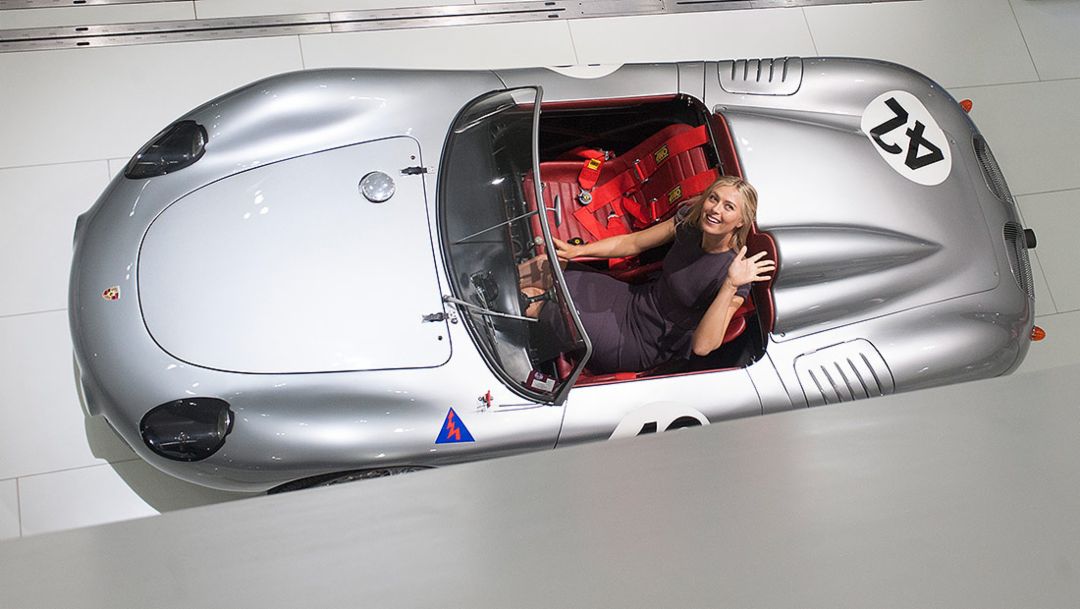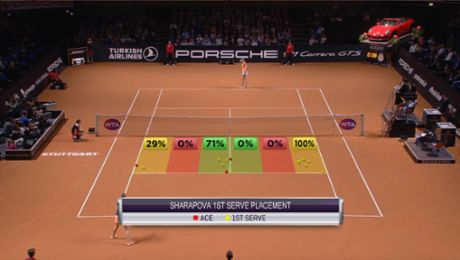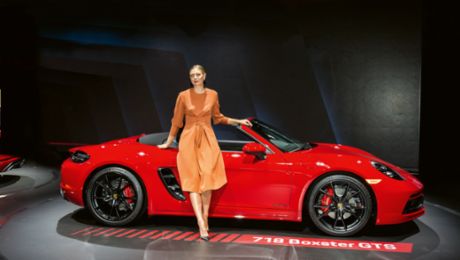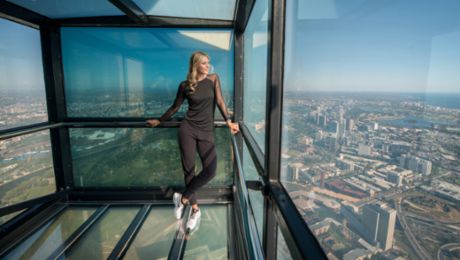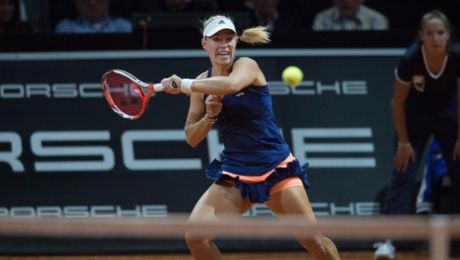Because behind the stars' handiwork on the court stands a veritable small firm. So, tournament victories are always also the product of the collective efforts of teams of experts of various sizes. They are the stars behind the stars.
At the time when the Players Lounge of the US Open was still located beneath the roof of an aged, somewhat scruffy-looking training facility, the impresario Ion Tiriac called this makeshift stomping ground of the international tennis scene a "hell on earth": "It's like a clearance sale or a bazaar here", the Romanian multimillionaire used to lament, tongue in cheek, "so many people who don't play tennis themselves. I can't see how I can do any business here."
The withdrawal options for the world's best women tennis players during the US open have become a lot bigger and more comfortable long since. The Billie Jean King Tennis Center outside New York houses a modern restaurant, a cosy lounge area, an impressive computer room and a secluded Players Garden. But a little inspection tour in the inner sanctum of the tour caravan during the first days of the major competition reveals: it is still full, there's still a lot of pushing and shoving. And lucky is the one who is able to snatch a place to sit or a halfway quiet corner for discussions. The reason is as simple as it is evident: many players today travel through the world with an even more impressive entourage than ever before, especially the superstars who expect to gain a small but decisive edge from ever more specialised care and support in the hard competition for titles and trophies. "The times when even the best on the scene jetted around the globe with just one coach and maybe one parent are over", says Martina Navratilova, one of the dominant market leaders and trend-setters in the 1980s.
Maria Sharapova is the guiding figure
The guiding figure in the here and now is apt to be Maria Sharapova, the Russian who once upon a time left her home on the Black Sea at the age of seven in order to conquer the world of tennis in an improbable mission. In the meantime, the 27-year-old blonde is a prominent presence in the travelling circus of the tennis nomads and also the highest-earning athlete on the planet. It's not only her hard serves or the burning passion that make it possible for Sharapova to achieve still another comeback after yet another injury and that serve as an inspiration to many younger colleagues. Her cool-headed foresight as a tennis entrepreneur also fascinates people – the strategic strength to form a team of experts around herself time and again, who assist her silently as a service machine. Just now, Sharapova has implemented a number of changes in order to arm herself for the challenges of 2014 and beyond. "When I travel with the team, it's true that more than a few hotel rooms are needed", says the Porsche brand ambassador, "but this manpower pays off."
Sharapova's supporting team in terms of size and make-up is not so unusual either. In his function as head coach, the Swede Sven Groeneveld is also team manager. He is accompanied by the French physiotherapist Jerome Bianchi, the Japanese athletics and fitness coach Yutaka Nakamura and the German sparring partner Dieter Kindlmann. Sharapova's smart business manager, IMG agent Max Eisenbud, calls the troupe jokingly the "United Nations of Maria". Eisenbud, who is one of the most knowledgeable persons in terms of the tennis circus and its business processes, says à propos of the rising number of employees, which don't exist only for the Russian player: "The requirements today are so comprehensive and complex that one person alone as a coach cannot meet them all, in any case not in the case of a top player."
The American knows: "This division of labour makes sense and is productive." It comes as no surprise then that the number 1 in women's tennis, Serena Williams, approaches her global craft with a similarly structured company portfolio – which includes the permanent hitting partner from Germany, Sascha Bajin from Munich. "Tennis today, on this level, is the product of a kind of collective effort. A huge composite made by people who have to cooperate in multifarious tasks and who have to function well together. They create the platform for the triumph of the star", says the former number 1 in worldwide ranking, Chris Evert. She adds: "Compared to that, things were quite romantic and tranquil in our time."
The travelling party is a sworn unit focused on one aim
With many main players, the character of that entourage in the player's box you see in TV broadcasts from centre courts has also changed – those support personnel who want to or have to encourage and strengthen their daughter or boss in all tennis circumstances. Many of these companions, among them friends and acquaintances, used to be a sort of replacement family – a preventive humane measure against the tour life possibly leading to social isolation. Today, the travelling party is still a sworn unit focused on one aim in the best-case scenario. But often there is also a level and atmosphere of purely targeted sober collaboration. Completely business-like. Sharapova is seen as somebody who strictly separates work and private life. "She goes, so to speak, to work in the company, does her job. Then she goes home again", the German Andrea Petkovic says. Petkovic, former number 1, belongs to the upper middle field like many professional colleagues. She works with many excellent specialists and is accompanied on tours by her coach and physiotherapist.
Occasionally, she, like other players, is joined by family members: Papa Zoran in Petkovic's case; or for the German top ten star and World Championship participant Angelique Kerber, her mother Beata. "She still needs me sometimes as a person close to her. She often calls and says: Mama, would you please come to the tournament", says Beata Kerber, a trained tennis coach herself. "There are just some things you cannot discuss with your coach or other people. Or don't want to." So, visits to the stands are not always pure joy for family members. When Kerber reached the semi-finals in the 2011 US Open after a sensational performance, Mama in the VIP box "died a thousand deaths": "I thought I'd die from the excitement. I certainly don't need this kind of stress very often. But I still like doing it for Angie."
Players suddenly began to pull another ace out of their sleeves
Just how acrimonious the power struggles in today's tennis are – the struggle for the best and most rewarding prizes of the tour – could be observed around the Christmas holidays in top-flight men's tennis, where another build-up in terms of staff took place. Although the top players in men's tennis had already an optimal number of helping spirits at their disposal, some of them even nutritionists and mental coaches, they suddenly began to pull another ace out of their sleeves, namely the stars from another era – on the basis of the maxim: back to the future. Andy Murray's alliance formed with Ivan Lendl, ended in the meantime, led the Scot to a Wimbledon victory; Novak Djokovic in turn felt inspired by that to hire Boris Becker. And Roger Federer was spurred on to make a deal with Stefan Edberg.
Even the Japanese newcomer Kei Nishikori got himself a well-known face from earlier: the small, great American player Michael Chang. "I can imagine that one or two top players in women's tennis will follow suit", says former WTA head and television commentator Pam Shriver, “everybody is searching for that little bit extra, a special kick. The icing on the cake, which will bring a great victory." Of course, there is also the group of aspiring players and very young professionals, who are far from being able to afford substantial investments along the lines of the Sharapova firm. This group includes German talents like Annika Beck and Mona Barthel. But there are also creative models available to them and others so as to stay close to the great ones in the business – for instance, in sharing the work of a physiotherapist or performance trainer. More people on a team almost inevitably bring added value. And anybody thinking too small and too timidly will fall by the wayside.
